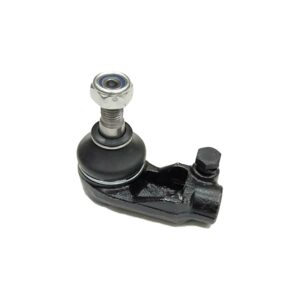Tie rods are essential parts of a vehicle’s steering system. They are located towards the end of the steering rack and connect the steering and suspension systems to the front wheels, which allows the precise turning of the wheels in response to the turning of the steering wheel. With the proper functioning of the tie rods, it will be easier to steer your vehicle in the desired direction, and it can also prevent alignment problems.
Generally, tie rods should last the life of the vehicle. However, certain external factors such as speed humps, potholes, or rough roads can accelerate the wearing out of tie rods, especially when the vehicle is driving over them at speed. Also, because the tie rods constantly spring into action as the steering wheel turns, they are bound to wear out over time. Therefore, it is essential to pay attention to the signs of bad tie rods and have your vehicle attended to once it starts showing these signs.
Signs Of A Bad Tie Rod
Vibrations In The Steering Wheel
Since tie rods connect the suspension, steering system, and wheels, a worn-out tie rod cannot hold them firmly together, leading to vibrations in the steering wheel as the vehicle moves.
Loosened Steering Wheel
The steering wheel starts to feel loose since the bad tie rods are no longer properly connected. As such, the vehicle becomes less responsive when turning the steering wheel, and the wheels can move in any direction.
Improper Front End Alignment
Worn-out tie rods lead to poor alignment since there is a loosened connection with the wheels. Thus the vehicle always reverts to having a poor alignment shortly after going through an alignment procedure.
Vehicle Pulling To One Side
Usually, a vehicle should continue to travel in a straight line when you take your hands off the steering wheel. Worn-out tie rods will cause the vehicle to move to the left or right as you try to maintain control.
Clicking Sound From The Front
A clicking or squeaking sound from either of the front wheels while driving is an indication of a bad tie rod. The sound intensifies as speed increases or when taking corners.
Abnormal Tire Wear
Ties are bound to wear out, but they wear out faster due to the worn-out tie rods. It can also lead to uneven wear, making a portion of the tie, especially the inner or outer edges, wear out faster than the rest.
Vibration In The Entire Vehicle
The loosened suspension and steering components, poor alignment, and unevenly worn tires create vibrations in the vehicle while it moves, rendering it less comfortable to drive.
